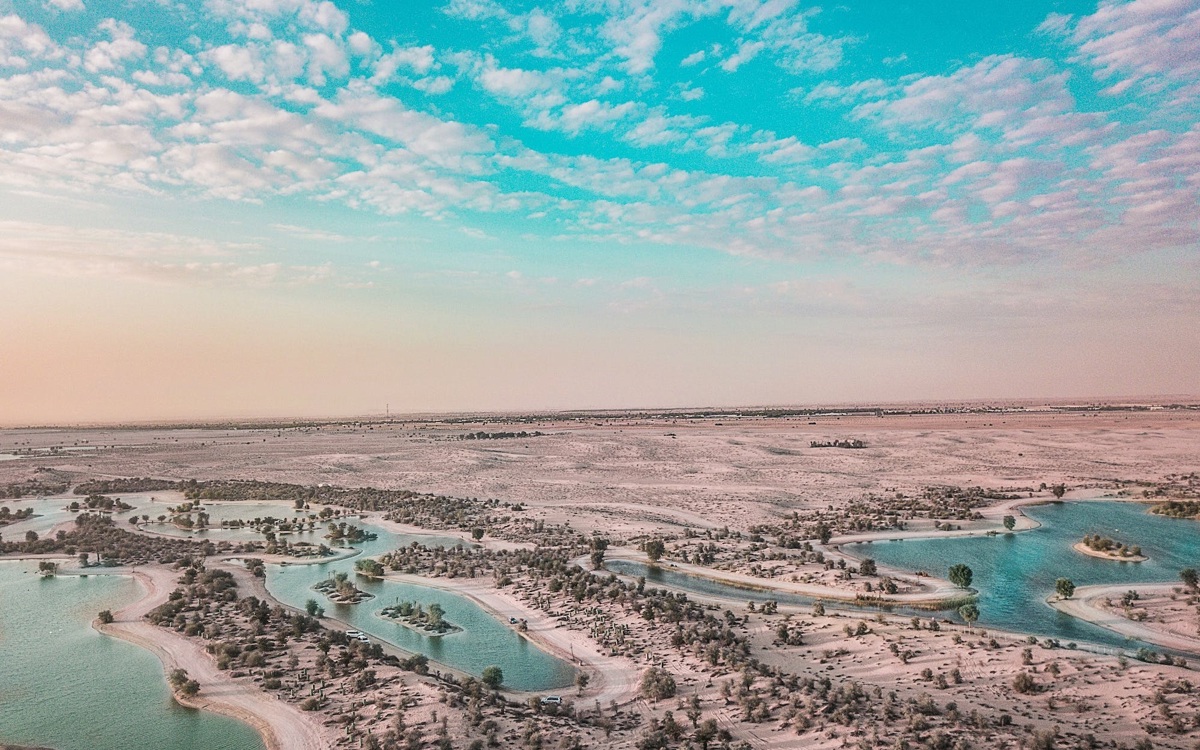
The ACU Summer School provides a forum for students from every corner of the Commonwealth to discuss multidisciplinary issues of global importance.
In 2020 delegates from across the Commonwealth came together online for The migration generation? Climate, youth and refugees, to examine themes linked to migration, including: climate change, youth labour market participation, social media, health, and intergovernmental partnerships.
In groups, students delivered a presentation on a topic linked to migration before a panel of judges. In this series of blogs, the three winning groups write about their ACU Summer School 2020 projects. This group presented on migration as an adaptation strategy to climate change and came first place.
One of the greatest repercussions of climate change is changes in population distribution and migration. Millions of people around the world have been displaced by severe disruptions in their lives and livelihoods arising from erosion, flooding, glacial melt, erratic rainfall, heatwaves. The World Bank has predicted that 143 million people will be forced to move internally by 2050 if no climate action is taken.
Migration has often been considered as a failure in the adaptation process to climate change, rather than an effective response. Such a view underestimates the potential of climate-change migrants. This is exacerbated by gaps in research and policy around internal migration and slow-onset climate change. We need to invest more research into this area to devise ways to use migration as an adaptation strategy to climate change.
Climate change and migration
Climate change causes two distinct, yet synergistic drivers of migration:
1) slow-onset climate processes (rising sea levels, salinization, erosion, desertification, water scarcity)
2) rapid-onset climate events (such as flooding and storms)
Due to the complex relationship between climate changes, conflict, livelihood opportunities, and other non-climatic drivers of migration, establishing a clear-cut relationship between anthropogenic climate change – climate change which is caused by human activities - and migration has been difficult.
Slow-onset climatic processes and rapid-onset climatic events leave poorer countries particularly vulnerable. The hotspots are increasingly marginal areas (low-lying cities, areas of high water and agriculture stress) with ecosystem dependent services and goods, and sparse resources and opportunities.
Unlike rapid-onset climate events, slow-onset climate change leaves more room for intervention. People have more decision-making power when it comes to deciding when to move, who to move with, who stays behind, and their destination.
Slow-onset climate change and internal migration
Most of the data collection efforts around migration and climate change are emergency-activated and start beyond the critical threshold. We looked at a few key slow-onset climatic processes driving internal migration across Nigeria, Ghana, Kenya, India, Sri Lanka, South Africa, and the United Kingdom (UK).
Low lying coastal populations are displaced in some cases due to land-insecurity resulting from rising sea level, coastal erosion, increased upstream salinization of groundwater stores, destruction of mangroves and loss of many associated ecosystem services.
In regions where drought is prevalent and desertification is spreading, there is increasing stress on economic stability and health as the land is inextricably linked to livelihoods. Rising temperatures, increased evapotranspiration, reduction in groundwater reserves, decreased precipitation and decreased biodiversity all contribute to the acceleration of desertification. This land provides the principal basis for human livelihoods and well-being, including the supply of food and multiple other ecosystem services.
Looking forward
To tackle these challenges, some countries have adaptation policies; however, implementation of these policies is key to seeing results. According to the World Bank (2018), sustainable development is the best adaptation strategy since it is associated with improved infrastructure, market-oriented reforms, enhanced human capabilities, and stronger institutional capacity to respond to the increasing threat of climate change and natural disasters.
We propose the following recommendations to help unearth the potential of climate-change migrants, while addressing the corresponding impacts:
- Planned migration as a proactive adaptation strategy for areas with high risks of displacement.
- Allocation of resources for the development of sustainable infrastructure for inclusive secondary growth centers.
- Conversion of non-productive land to sustainable cities and communities
- Consideration of occupational mobility through migrant skill development programmes to accommodate them in a capital and skill-intensive job market
- Ensuring involvement of all stakeholders including the vulnerable communities in the policy making process.
- Strengthening of agricultural skills through the use of technology
- Civil society organisations and well-meaning coalitions similar to the UK Climate Change and Migration Coalition (UKCCMC), should be set up for communication and advocacy on challenges affecting environmental migrants.
Authors
Godwin Abakari, University for Development Studies, Ghana
Sharanya Chattopadhyay, Tata Institute of Social Sciences, India
Teya Ellen Hutchison, University of Bristol, United Kingdom
Bakenga Maksudi, University of Cape Town, South Africa
Constance Mbala Mwakio, University of Edinburgh, Kenya
Isaac Omotayo Olabimi, The Federal University of Technology, Nigeria
Heshan Ridmika Wijayathunga, University of Kelaniya, Sri Lanka
